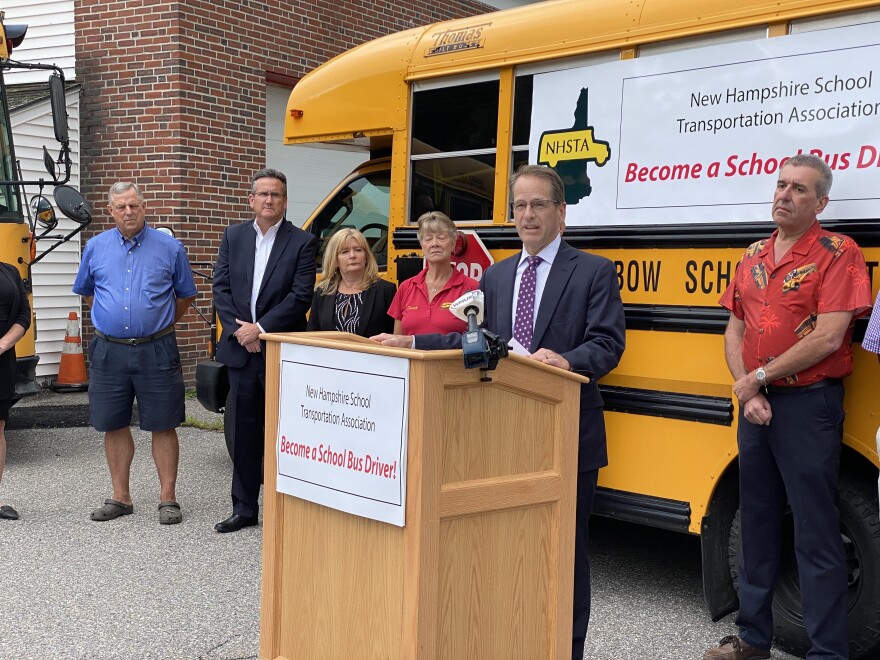As the school year approaches, some New Hampshire school districts are still looking for more bus drivers.
The shortage isn’t new, but it has created ongoing challenges for many communities. In recent years, the shortages have led to canceled activities, extended bus routes and longer waits or ride times for local students.
Some school district officials and others in the transportation field say they’re trying to help recruitment with increased wages — and trying to help families plan for sporadic bus schedules with new technology.
In Newport, Ed Emond, who works part time in the district’s administrative offices, said they have just enough drivers to get by. But if one driver is out sick, they’ll have to make adjustments. Due to the ongoing shortage, he said the district will continue to use modified bus routes.
“We have a smaller window of time when we do field trips as well as any after school programs that require a bus,” Emond said. “ We can't do all the bussing until all of our bus runs are complete”
Some districts are reusing last year’s alternate routes. In other communities, the White Mountains and Keene school districts are using an app called FirstView to keep families up to date with any changes. The software tracks and estimates local bus routes. When a district is short a driver, the app allows parents to know how late — or early — their child’s school bus might be.
In Keene, school officials are working with their transportation contractors, FirstStudent and D&L Transit, to ensure they have enough staff. Tim Ruehr, the district’s chief financial officer, said their transportation provider has done a better job communicating with parents when there are issues with bus routes.
“The bus company can send out info,” Ruehr said, “so parents have information in real time.”
Like a lot of other workplaces, Ruehr said, absenteeism created some challenges for the district’s bus routes. He said the district adjusted by extending the length of certain routes, or by cutting back on transportation for sports.

Paula Leslie said she first started seeing signs of a bus driver shortage a decade ago, when she was working in management for larger bus companies. Now the owner of D&L Transit, she said she sometimes fills in as a bus driver herself.
At times, Leslie said she’s had to turn down routes that include stops with only one student at a time.
“I have to turn down work, you know, not be able to help,” she said. “People call desperate for trips and stuff or to do things. And you have to say no.”
Leslie said she has tried increasing wages, but it’s a challenge balancing those costs with other necessities, like background checks and other regulatory requirements.
Ruehr, with the Keene School District, says his district is also trying to put together resources that make it easier for applicants to complete the licensing process and get certified to drive safely.
Tina Reynolds, the office manager for W. W. Berry Transportation said she is down seven bus drivers. It’s having a major impact on her business, which serves the White Mountain School District, but Reynolds said she’s trying everything possible to make it work, including increasing wages.
“It's super hard, because we're very rural here,” Reynolds said. “So we could have one kid who lives on a random road in one town that we're driving 10 miles, for example, one way to go pick up one student who lives out in the middle of nowhere to turn around and come 10 miles back to continue a route.”
Recruiting for this kind of seasonal, part-time position is a persistent challenge, Reynolds said. The problem, Reynolds said, is due to the position being seasonal and part-time. A typical shift is 20 hours a week, not enough to qualify for benefits.
“There could come a point in the state of New Hampshire, with not just us but other bus companies, where we don't have a bus available to take kids on a sports trip to another school,” she said.






